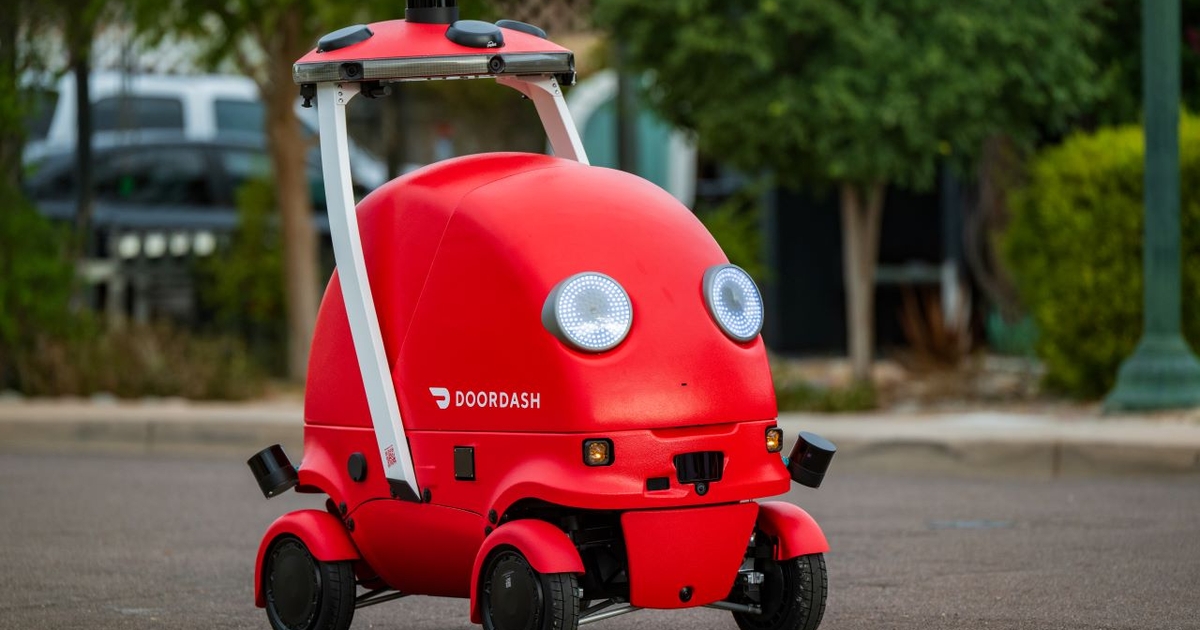DoorDash has unveiled its new small-scale sidewalk delivery robot, Dot, for quick local deliveries.
Described by the company as its first commercial autonomous robot “built to travel seamlessly on bike lanes, roads, sidewalks and driveways,” Dot is a tenth the size of a car and can travel up to 20 miles per hour, according to the company.
The electric robot comes equipped with eight cameras and three lidar sensors to help it navigate roads and sidewalks.
“Dot is purpose-built for the millions of deliveries we facilitate every day,” Stanley Tang, head of DoorDash Labs, said in a statement. “It is small enough to navigate doorways and driveways, fast enough to maintain food quality, and smart enough to optimize the best routes for delivery.”
Dot was developed in-house by DoorDash Labs and is designed to integrate with the company’s newly announced Autonomous Delivery Platform.
The “AI dispatcher” matches orders with the best delivery method, including a human Dasher, a drone or a sidewalk robot.
Initial tests of Dot are taking place in Phoenix, Arizona, with plans to expand into other metropolitan areas.
The company has stressed that Dot is not intended as a replacement to human riders, with these “Dashers” anticipated to still handle the “vast majority” of its deliveries.
Dot marks DoorDash’s first official push into autonomous vehicles. Previously, the company collaborated with Google spin-off Wing for airborne drone delivery and with Coco Robotics for sidewalk delivery robots, with the projects joining autonomous delivery initiatives from the likes of Uber Eats.
George Chowdhury, a robotics analyst at ABI Research, said increased deployment of autonomous delivery robots has less to do with the rise of enabling technologies and more to do with “economies of scale.”
“These organizations — Uber Eats, Deliveroo, DoorDash — are sufficiently big enough, in terms of customer base and infrastructure, to experiment with new cost savings technologies and stomach teething problems or potential losses,” he said.
With regulatory hurdles facing the use of drone deliveries, the hybrid approach DoorDash is championing will be the only viable option moving forward, Chowdhury said. The integration of robotics into the delivery industry will naturally have an effect on workforce structures, although Chowdhury said the effects will be both good and bad.
“It will surely harm the gig-based economy. For many of these technology giants, the ultimate end game is full automation,” he said. “A reprieve is given to the human worker in the fact that machines are terribly flawed — there are many things they can’t do which we can. And this is likely to remain the case for some time, at least until there’s another step change in AI capabilities. The plus side is that more roboticist jobs will be created to service these new fleets of robots. These jobs will command higher salaries but be fewer in number.”

